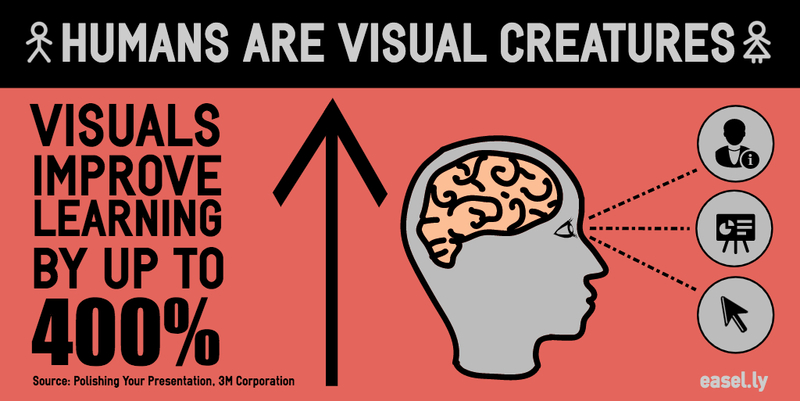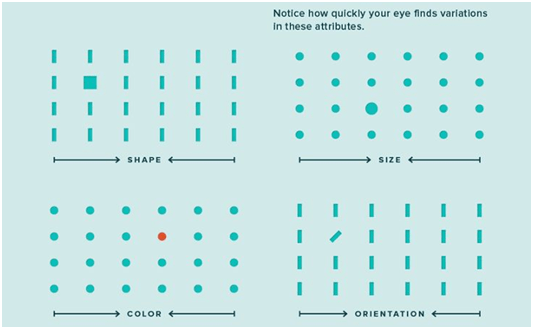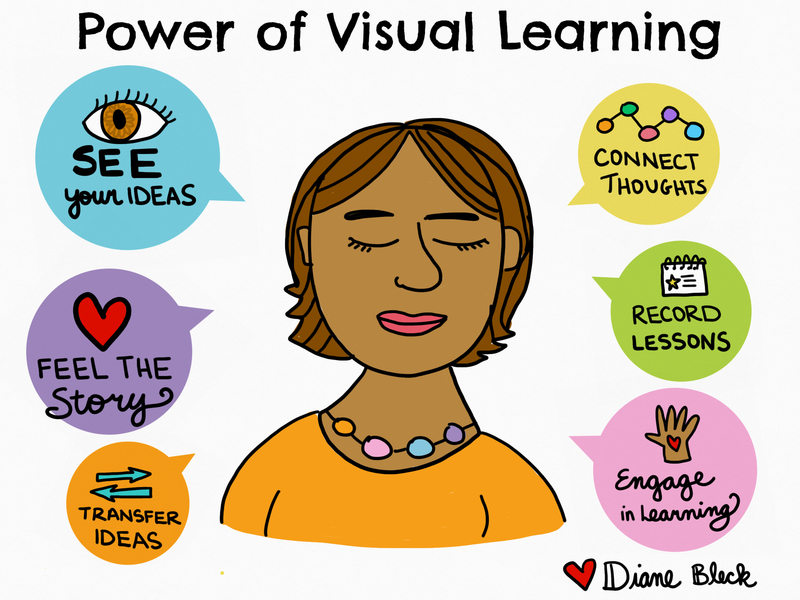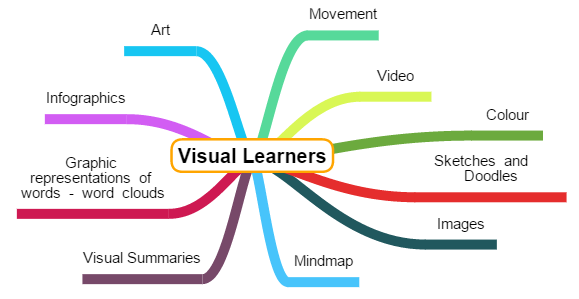e-Learning Ecologies MOOC’s Updates
Multimodal Meaning Concept: Visual Learning
When I see, I understand.
Visual learning helps one to see the information to understand and learn it. It captures the image of what it sees, based on spatial awareness, colour, brightness, images, or any other visual information.
To fully understand visual learning and teaching, the following concepts need to be further discussed:
- Visual literacy,
- Visual language, and
- Visual communication
Visual literacy has been defined in many ways. It encompasses the ability to do three things: a), decode (or, to understand and translate communications made with visual imagery), b) imagine (or, to interpret and manipulate mental models of imagery), and c) encode (or, the external images that we create). It also includes the ability to be an "informed critic of visual information", able to ethically judge accuracy, validity, and worth. For example, when visually literate students encounter graphs and charts in their text, they often have the ability to read and analyse the visual and verbal message, comprehend meaning, question irrelevant or misleading data, and create a visual/verbal response to it.
Visual language is a form of communication that is “not aural, written, or gestural”. It depends on forms, design, shapes, colour etc. to convey messages, excluding the spoken words and signed words, for instance, pictograms, hieroglyphs, and ideograms etc. Signs and symbols for trains, planes, busses, restrooms, and restaurants are readily understood visual communications that do not rely on language to be understood. Doodling, as well, is a basic form of visual language: once thought to be associated with mere dallying or scribbling absentmindedly, doodling has more recently been defined as “making marks to help yourself think”. In the classroom context, visual language can expand to more advanced graphic forms including mind maps, presentations, or picture books.
Visuals help learners grip concepts with ease by stimulating their imagination while affecting their cognitive capabilities. Besides, the visual language is also known to have the potential to stretch “human bandwidth” – comprising of absorbing, comprehending and analysing new information. For instance, the infographic below represents how we are pre-wired to automatically interpret relationships between objects which ensures instant comprehension with almost zero effort:
As to discuss visual communication, we actively rely on it - to perform routine tasks (for instance, when driving to places unknown, we follow directions on road signs). Sometimes, however, we are unaware of our participation in the visual conversation. This is because we receive messages via visual communication constantly: photos in magazines, images in advertisements, icons within emails. Visual learning and teaching, therefore, introduces skills to help educators and their students become active visual communicators.
Words are processed by our short term memory where we can only retain about seven bits of information, images; on the other hand, go directly into long term memory where they are indelibly etched.
Educators can make use of images, videos, charts, maps, documentaries, diagrams, etc. as teaching aids in the classroom. Students taught in visual learning style excel in their academic performance. Moreover, their attention span improves: they will pay attention to your whiteboard, Powerpoint presentations, slides, handouts, maps, graphs, charts etc. One can try to implement the following strategies for the same:
- Deliver lectures with handouts, diagrams, images, maps, charts etc.
- Provide written notes
- Usage of coloured themes in presentations and handouts
- Usage of images and videos for better learning outcomes
- Diagrams for the explanation of vital concepts
- Flashcards with pictures
- Storytelling for concept visualizing aid
- Curriculum-based assignments and involvement of students in class activities and group projects
- Encouraging students to write and express
- Dramatization and crafts-based learning
REFERENCES:
- 'A Guide to Visual Learning' https://www.indeed.com/career-advice/career-development/visual-learner
- 'Why Visual Learning and Teaching?' https://www.insightresources.org/2019/04/26/why-visual-learning-and-teaching/
- 'Visual Learning - Benefits and Strategies for Students & Teachers' https://www.embibe.com/exams/visual-learning-benefits-and-strategies-for-students-teachers/amp/
-
'Visual Learning: 6 Reasons Why Visuals are the Most Powerful Aspect of e-Learning' https://elearningindustry.com/visual-learning-6-reasons-visuals-powerful-aspect-elearning





